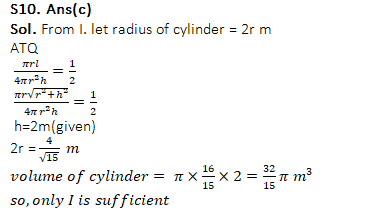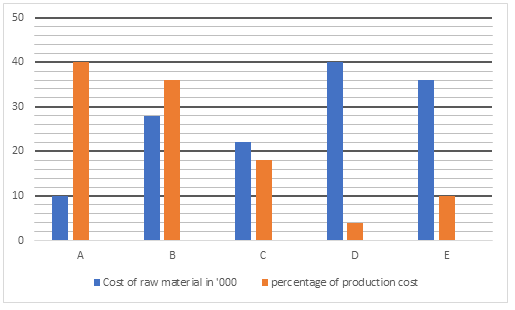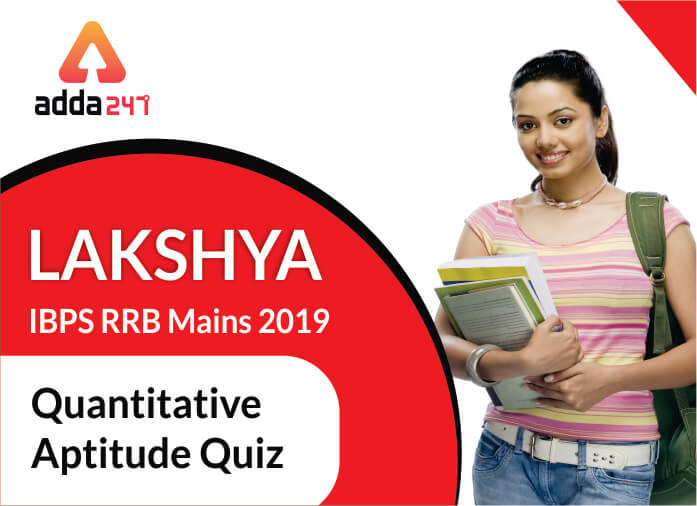(a) Rs 11560
(b) Rs. 11060
(c) Rs. 9000
(d) Rs. 9200
(e) Rs. 10240

Q2. Pankaj purchased 3575 balls and 2002 bats and cost price of one bat is equal to cost price of one ball. He sold ball in such a way that he can buy 850 balls by selling 799 balls and can buy 777 bats by selling 987 bats. Find approximate overall loss/profit percent earned by Pankaj by selling all balls and bats.
(a) 4%
(b) 5%
(c) 7%
(d) 6%
(e) 9%

Q3. A shopkeeper mark up 60% above cost price of an article and allows three successive discounts of 20%, 12.5% and ‘d’ % and made a profit of 7.52%. If shopkeeper allows only first and third discounts, then find profit percentage earned by shopkeeper?
(a) 22.88%
(b) 20.80%
(c) 18.88%
(d) 24.80%
(e) 28.88%

Q4. Amit bought total of 44 laptops and mobiles together. Laptop costs two times of mobiles. He marked up the laptop by 50 % and phones by Rs. 3000 and sold these. He sold 80 % of mobiles and 6 laptops at Rs. 636000. The remaining mobiles and remaining 3 laptops are unsold due to some faults. Find his overall profit/loss on total quantity?
(a) Rs 600
(b) None of these
(c) Rs 750
(d) Rs 350
(e) Rs 425

Q5. A wooden seller has some number of tables which are 25% more than number of chairs. 60% of tables and 50% of chairs are sold, each table is at Rs. 250 and each chair is at Rs. 240. If number of sold tables are 30 more than that of sold chair, then find difference between total selling price of sold tables and sold chairs (in Rs.)?
(a) 8200
(b) 8100
(c) 9100
(d) 8400
(e) 8500

Directions (6-10): The following questions are accompanied by either two statements (I) and (II) or three statements (I), (II) and (III). You have to determine which statements(s) is/are sufficient/necessary to answer the questions.
Q6. Profit percent of article when it is sold at market price?
I. Cost price of article is Rs.240.
II. Shopkeeper gives 2.5% discount on M.P. and gives 1 article free at purchase of every 12 articles and still gains 20% profit.
(a) I and II together
(b) Only II
(c) neither I nor II
(d) only I
(e) either II or I

Q7. Find no. of blue balls in the jar.
I. When two ball are drawn at random probability of getting one blue and one red ball is 6/23.
II. 6 balls are green ball and rest are blue and red.
III. There are 24 balls in the jar and number of blue balls are more than red balls.
(a) All the three together.
(b) Either III alone or I and II together
(c) none of these
(d) Either II alone or I and III together
(e) Either I alone or II and III together

Q8. Find the compound interest earned in 2nd year on Rs. 3430?
I. Rs. 3430 becomes 49 times in t years and 64 times in t+2 years at same rate of CI.
II. If 3rd year CI is Rs.x.
(a) Only II alone.
(b) Either I alone or II
(c) Only I alone
(d) I and II together.
(e) Neither I nor II alone

Q9. There are some boys and girls in a class and average age of class is ![]() ears. Find total no. of students?
ears. Find total no. of students?
I. Average age of boys and girls in class is 26 and 20 respectively.
II. When no. of girls reduced by 6 then they become![]() of total students in class initially.
of total students in class initially.
(a) only I
(b) I and II together
(c) Either I or II
(d) only II
(e) None of the above

Q10. Find volume of a cylinder whose height is 2m.
I. A cone is cut from cylinder whose base radius is half of radius of cylinder and of equal height and ratio of curved surface of cone to volume of cylinder is 1:2.
II. Cylinder is converted into 6 spheres of equal radius.
(a) Either II alone or I alone
(b) Only II alone
(c) Only I alone
(d) none of these
(e) I and II together

Directions (11-15):- Bar graph given below gives information about raw material cost (in Rs. ‘000) of five different products i.e (A,B,C,D, and E) manufactured by a company and percentage for cost of production which was calculated on raw material cost of that product. (Cost price of each product for company = raw material cost of that product+ cost of production of that product).
Q11. If on selling product B company got profit of ![]() of production cost of that product. Find market price of the product if product was sold at market price.
of production cost of that product. Find market price of the product if product was sold at market price.
(a) Rs.38080
(b) Rs.26532
(c) Rs.29480
(d) Rs.35784
(e) Rs.39760

Q12. Find ratio of cost price of product A to cost price of product E for the company.
(a) 5:18
(b) 1:4
(c) 35:99
(d) 15:38
(e) 19:45

Q13. Production cost consists of transportation cost and machining cost. If for product D transportation cost is 10% of its production cost, then find at what price company should sell it to get 25% profit if transportation cost is not considered by company in calculating cost price of this product?
(a) Rs.51800
(b) Rs.41000
(c) Rs.42518
(d) Rs.40400
(e) Rs.43428

Q14. Production cost of product B is approximately how much percent more than production cost of product C?
(a) 160%
(b) 155%
(c) 142%
(d) 157%
(e) 162%

Q15. If product E was sold at![]() profit than it’s selling price becomes equal to selling price of product B when it was sold at d% profit. Find approximate value of ‘d’.
profit than it’s selling price becomes equal to selling price of product B when it was sold at d% profit. Find approximate value of ‘d’.
(a) 15%
(b) 10%
(c) 17%
(d) 9%
(e) 13%

For 200+ most important arithmetic questions
- Quantitative Aptitude Study Notes for Bank Exams
- 100 MCQs Data Interpretation | Download Free PDF’s of DI
- Quantitative Aptitude Questions for all Competitive Exams





 GA Capsule for SBI Clerk Mains 2025, Dow...
GA Capsule for SBI Clerk Mains 2025, Dow...
 The Hindu Review October 2022: Download ...
The Hindu Review October 2022: Download ...
 SBI PO Descriptive Paper, Previous Year ...
SBI PO Descriptive Paper, Previous Year ...





